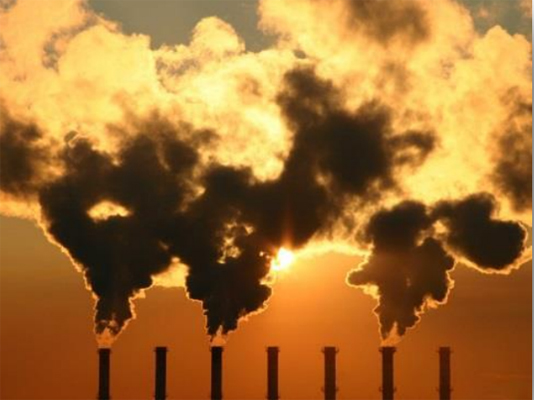A exposição da população a uma concentração elevada de poluentes na Amazônia brasileira ocorre por um período médio anual de três a cinco meses, associado a baixos índices de chuva. Nos centros urbanos, essa exposição é crônica, o que aumenta a incidência e a mortalidade por doenças respiratórias e cardiovasculares. As secas de 2005 e 2010 foram exemplos da vulnerabilidade da Amazônia brasileira às queimadas, com impactos diretos para a saúde, a economia e o ecossistema local. O uso e ocupação do solo na região continua sendo desordenado, com extensas áreas de desmatamento e prática indiscriminada de queimadas. Esse processo libera a maior parte do estoque de carbono para a atmosfera, com elevadas concentrações de poluentes, que são misturados e transportados para outras regiões do globo.
No caso da Região Amazônica, com circunstâncias geográficas e ambientais específicas, aliadas a um processo histórico de ocupação do território também singular, o uso do fogo para manejo da terra expõe, ano a ano, cada vez maiores parcelas da população aos seus efeitos, tornando-as mais vulneráveis. As informações sobre os perfis de morbidade2 e mortalidade e sua relação com os problemas ambientais são escassas e incompletas em uma região extensa, cuja população apresenta diversidade biológica e cultural significativas em razão da origem do fluxo migratório.
É importante conhecer o comportamento das doenças respiratórias e cardiovasculares no território e suas relações com os processos de queimadas e variabilidade climática, possibilitando analisar séries temporais, diferentes cenários de exposição e fatores de risco. Em áreas urbanas, alguns efeitos da exposição a poluentes são potencializados quando ocorrem alterações climáticas, principalmente, as inversões térmicas3. Verifica-se tais consequências em relação a alergias, asma e infecções bronco-pulmonares e das vias aéreas superiores (sinusite), sobretudo, nos grupos mais vulneráveis, que incluem crianças menores de cinco anos e pessoas com mais de 65 anos.
Em um cenário de aquecimento global, o quadro na região tende a piorar, considerando-se a probabilidade de intensificação do período de seca e redução acentuada de umidade, que resultaria em maior vulnerabilidade às queimadas. As alterações de temperatura, umidade e regime de chuvas podem modificar as condições de exposição aos poluentes e agravar as doenças respiratórias. Parece inevitável que as mudanças climáticas de longo prazo causem danos em escala planetária, dada a evidência da relação entre variações do clima, níveis de poluição atmosférica e efeitos na saúde.
Para aprofundar e intervir sobre essas temáticas é imprescindível o envolvimento dos atores sociais locais e regionais, ações de sensibilização, mobilização, recursos humanos, materiais e financeiros, entre outras atividades que levem à criação de ferramentas para um programa de vigilância de saúde ambiental capaz de reduzir incertezas e fortalecer as evidências dos efeitos da poluição na Amazônia brasileira sobre a saúde. Nesse diagnóstico, o Observatório constatou a necessidade de um inventário de agravos à saúde de doenças respiratórias e cardiovasculares. Para resolver a questão, promoveu oficinas com pesquisadores, gestores e atores sociais provenientes das mais diversas áreas no ano de 2010 em Porto Velho, Rondônia.
O projeto realizou debates sobre as queimadas na Amazônia e selecionou indicadores capazes de acompanhar os processos de exposição e desfecho das doenças relacionadas à poluição. O evento também auxiliou na dinamização da Vigilância em Saúde e Ambiente das secretarias de saúde (municípios e estados), orientou a prática da vigilância espacial e temporal e contribuiu para a formulação de diagnósticos e a instrumentalização do Sistema de Informação em Vigilância Ambiental em Saúde.
Tendo em vista a diversidade de situações vinculadas às mudanças climáticas e demais temas estudados pelo Observatório, estamos lançando uma interface que propicia a inserção direta de informações pelos cidadãos. Agora o internauta pode relatar, por meio de textos, fotos e vídeos, um determinado processo de doença relacionado à poluição ou a variações climáticas, por exemplo. Essas informações integrarão uma base de dados visíveis em um mapa. Desse modo, qualquer cidadão poderá contribuir para a identificação de enfermidades e áreas que necessitem de respostas imediatas do poder público. É a Base Viva. Participe!
Fotografia: Análise de Situação em Clima e Saúde. Rio de Janeiro, RJ: Fundação Instituto Oswaldo Cruz - Fiocruz, Instituto de Comunicação e Informação Científica e Tecnológica - Icict, Ministério da Saúde, Organização Panamericana de Saúde - Opas, 2017.
